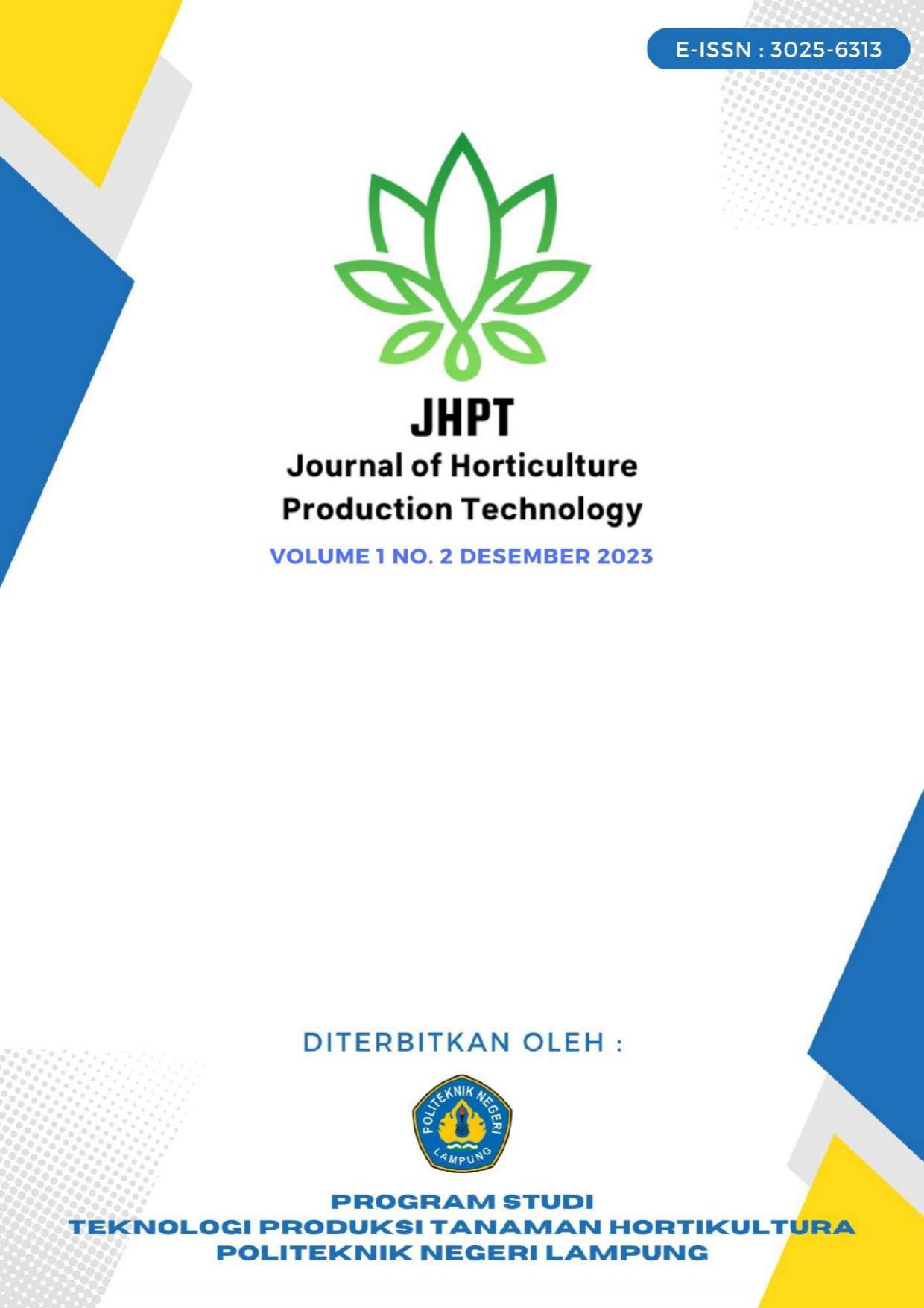Pengaruh Pemberian Biostimulan Azzofos terhadap Persemaian Jahe Emprit (Zingiber officinalle var. Amarum) pada Berbagai Wadah Persemaian
DOI:
https://doi.org/10.25181/jhpt.v1i2.3403Abstract
The antioxidant and anti-inflammatory content makes ginger one of the commodities sought after in Indonesia. The problem in ginger cultivation is the rhizomes used as seeds have long dormancy period. Application of Azzofos and the use of various nursery containers in ginger nurseries hope can break ginger dormancy. The objective of this research is to determine the concentration of Azzofos solution and the best nursery container. The experimental design used in this research was factorial Randomized Group Design (CRD). This research consists of two factors, first factor is nursery container consisting of cement floor, plastic tray and jute sack. The second factor is the concentration of stimulant solution consisting of water, dithane solution, and Azzofos solution with concentrations of 3 ml/l, 6 ml/l, and 9 ml/l. The research consisted of 15 treatment combinations which repeated three times, so there were 45 experimental units. The parameters observed were the number of shoots, shoot diameter, shoot height and percentage of weight loss of ginger rhizomes which observed at the end of the research. The data were analyzed using F test analysis at the 5% level. If there is significantly different then continue with the DMRT. The results showed that jute sack nursery containers had the lowest weight loss percentage of small white ginger rhizomes compared to cement floor and plastic trays nursery containers. Dithane solution and Azzofos solution with concentration of 9 ml/l had better shoot diameter and shoot height compared to water and azzophos solution with a concentration of 3 ml/l.Downloads
Download data is not yet available.
Downloads
Published
2023-12-29
How to Cite
Tiara, D., Darma, W. A., Putri, S. U., & Rahhutami, R. (2023). Pengaruh Pemberian Biostimulan Azzofos terhadap Persemaian Jahe Emprit (Zingiber officinalle var. Amarum) pada Berbagai Wadah Persemaian. Journal of Horticulture Production Technology, 1(2), 112-117. https://doi.org/10.25181/jhpt.v1i2.3403
Issue
Section
Artikel







